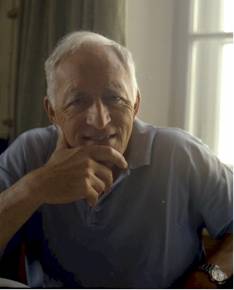 |
Scott
Sanner
|
Title:
Recent Advances in Continuous
Planning (Tutorial) - Sun 21/10
16:30
|
|
Abstract:
This tutorial will outline the importance
of continuous variables and actions in
deterministic and stochastic planning and
how one can cope with the complexity of
planning for such problems in practice.
The first part of the tutorial will focus
on modeling real-world phenomena both
abstractly (deterministic transition
models, MDPs, POMDPs) and in terms of
formal planning languages (PDDL, PPDDL,
and RDDL).
The second part of the tutorial will focus
on solution methods, ranging from search
in deterministic settings, through to
approximation methods such as
discretization and sampling.From this
point, the tutorial will shift to an
in-depth focus on very recent work that
allows the exact solution of an expressive
range of continuous planning problems via
a technique referred to as Symbolic
Dynamic Programming. The tutorial will
conclude by briefly connecting continuous
planning to related fields such as Control
Theory and Scheduling.
|
Title:
Data Structures for Efficient
Inference and Optimization in
Expressive Continuous Domains (Talk)
- Tue 23/10 16:30 (slides[pdf])
|
Abstract: To date, our ability to perform
exact closed-form inference or optimization
with continuous variables is largely limited
to special well-behaved cases. This
talk argues that with an appropriate
representation and data structure, we can
vastly expand the class of models for which
we can perform exact, closed-form inference.
This enables novel solutions to many
problems of interest in AI, machine
learning, operations research and beyond,
some of which have been unsolved for 50+
years.
This talk is in two parts. In the
first part, I introduce an extension of the
algebraic decision diagram (ADD) to
continuous variables -- termed the extended
ADD (XADD) -- to represent arbitrary
piecewise functions (nb, arbitrary pieces,
not just hyper-rectangular) over discrete
and continuous variables and show how to
define and efficiently compute elementary
arithmetic operations, integrals, and
maximization for various restrictions of
these functions. In the second part, I
briefly cover a wide range of novel
applications where the XADD may be applied:
(a) exact inference in expressive discrete
and continuous variable graphical models,
(b) factored, parameterized linear and
quadratic optimization (a generalization of
LP and QP solving), (c) exact solutions to
piecewise convex functions that enable a
number of novel applications in machine
learning, and (d) exact solutions to
continuous state, action, and observation
sequential decision-making problems -- which
includes closed-form solutions to previously
unsolved problems in operations research.
This is joint work with Zahra Zamani &
Ehsan Abbasnejad (Australian National
University), Karina Valdivia Delgado &
Leliane Nunes de Barros (University of Sao
Paulo), and Simon Fang (M.I.T.).
|
|







